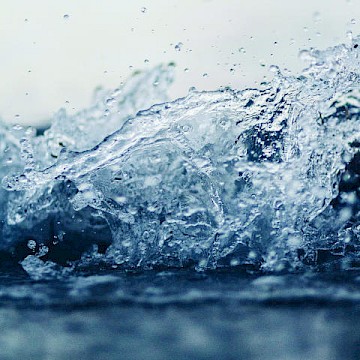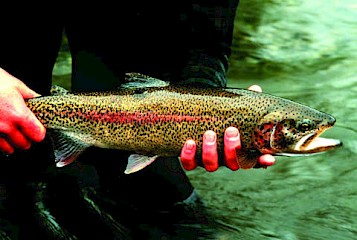Must be Something in the Water: Aqueous Toxicity
 Anybody who has worked anywhere that deals in larger volumes of oil (I’m talking anything over five gallons) knows that you never spill more than five gallons at a time. I’m not really sure where this number came from, but it generally holds true. The actual volumes can vary from state to state, country to country, where the oil is spilled (ground spill, water spill, concrete, etc.) or the actual type of lubricant. So, the five-gallon mark is a pretty conservative way of looking at this. If our biggest spill is five gallons, we likely won’t need to report the spill to any alphabet organization and cause a whole lot of headache.
Anybody who has worked anywhere that deals in larger volumes of oil (I’m talking anything over five gallons) knows that you never spill more than five gallons at a time. I’m not really sure where this number came from, but it generally holds true. The actual volumes can vary from state to state, country to country, where the oil is spilled (ground spill, water spill, concrete, etc.) or the actual type of lubricant. So, the five-gallon mark is a pretty conservative way of looking at this. If our biggest spill is five gallons, we likely won’t need to report the spill to any alphabet organization and cause a whole lot of headache.
Why do we even need to worry about spills?
Well, it turns out that almost everything on earth needs water to live, and when we start introducing random stuff to the water supply, we start making that water unfit for consumption. In fact, there’s a pretty good chance that the water will have stuff in it that will lead to major health concerns - ever heard of Flint, Michigan? Yeah yeah, I know; Flint’s issues were caused by a number of things: lead pipes, contaminated water, organic and inorganic contaminants, trihalomethanes, etc., but the comparison still holds true with groundwater and oil spills. Have you ever read the SDS/MSDS for a lubricant? There is a whole bunch of stuff in there that isn’t good for living things to consume.
What can we do about any of this?
There are regulations in place that give us a window into what is “safe” (safer) for the environment when it comes to oil spills. Testing is done in controlled environments to help us determine how much of a risk we are creating for ourselves, our families and the wildlife. A couple of different standards are used in determining the toxicity of substances, and it can get a little confusing. There are only a few hundred pages of regulations, tests and methods (in multiple languages), which, to be honest, makes things a bit of a nightmare - especially when you take a look at an SDS/MSDS and all you see are two lines with minimal explanation, like the following, which shows the results of toxicity tests performed on two different species: Oncorhynchus Mykiss and Daphnia Magna.
| Test | Duration | Organism Type | Test Results |
|---|---|---|---|
| Aquatic - Acute Toxicity | 96 hours | Oncorhynchus mykiss | LL50 1003 mg/l: data for similar |
| Aquatic - Cronic Toxicity | 21 days | Daphnia magna NOELR 1mg/l: data for similar materials | NOELR 1mg/l: data for similar materials |

The “LL50 1003 mg/l” part tells you that the test was done with a load of 1,003 mg of lubricant per litre of water in the reservoir. At this load, there was a < 50% death rate of the fish in the 96-hour test period. In regard to the fleas, reproduction properties were observed. With a load of 1 mg/l in the fleas’ reservoir, there was no obvious change in the reproduction cycles. The NOELR actually stands for “No observed effect loading rate.” The Load Limit (LL) is used to show the maximum contamination level before you start killing off half of the test subjects, but it isn’t the only acronym that you might see on this testing. Read the sidebar on pg. 37 to learn more about some of the common acronyms.
Aqueous toxicity can go a whole lot deeper than this as well. You might see terms like Tw(X) or Ts(X), where the (X) represents a number between 1 and 4. So, what are these indicating?

The Ts stands for Toxicity in soil, and the Tw indicates Toxicity in water. The numbers correlate to the LL50 rating and the concentration of oil contaminant it takes to get there. Simply put, a Ts/Tw 1 rating means that the Load Limit is greater than 1,000 mg/l. The 2 rating means that the contaminant load is somewhere between 100-1,000 mg/l, the 3 rating between 10-100 mg/l and the 4 ratings would be the most harmful, coming in at <10mg/l to reach the LL50 mark.
| Eco-Toxicity in Soil | Eco-Toxicity in Water | Loading Rate WPPM (LL50) |
|---|---|---|
| Ts1 | Tw1 | ›1000 |
| Ts2 | Tw2 | 1000-100 |
| Ts3 | Tw3 | 100-10 |
| Ts4 | Tw4 | ‹10 |
You may be asking, “How are they going to test rainbow trout survival rate in soil?” Well, they aren’t. For soil testing, they use earthworms and lettuce. The chart below is an EPA reference that gives breakdown of what species are tested and when they might be the test subjects:
Chart 3. Plant and Animal Species Used in Standard Toxicity Tests - Click to enlarge
There are quite literally hundreds upon hundreds of pages of regulation, test methods, results, etc., on this subject. This article isn’t meant to be a source for “how-to” and “what does all of it mean,” but rather is meant to provide a better basic understanding of what those lines in an SDS are actually telling us and why that stuff is important. But if someone really wanted to get DEEP into the weeds on the subject, I've collected some useful EPA links. To check those out, visit the web version of my article by going to machinerylubrication.com/Magazine/Current and clicking my article title.
| Medium | Test Organisms | Test Temp (°C) | Life Stage |
|---|---|---|---|
| Freshwater | Vertebrates | ||
| Brook trout (Salvelinus fontinalis) | 12 | 30 - 60 days | |
| Rainbow trout (Oncorhynchus mykiss) | 12 | 15 - 30 days | |
| Fathead minnow (Pimephales promelas) | 20- 25 | 1 -14 days | |
| Invertebrates | |||
| Amphipod (Hyalella) | 20 or 25 | 7-14 days | |
| Waterflea (Daphnia magna, Daphnia pulex, Ceriodaphnia) | 20 or 25 | 1-24 hours | |
| Mayfly (Hexagenia limbata, Hexagenia bilineata) | 17, 20 - 22 | Young nymph | |
| Midge (Chironomus) | 20 or 25 | First to second instar | |
| Alga | |||
| Selenastrum capricornutum254- 7 days stock culture | |||
| Marine and Estuarine Waters | Vertebrates | ||
| Sheepshead minnow (Cyprinodon variegatus) | 20 or 25 | 1 -14 days | |
| Silverside (Menidia species) | 20 or 25 | 9 -14 days | |
| Invertebrates | |||
| Sea urchin (Arbacia punctulata) | 20 | (1 hour old | |
| Mysid shrimp (Mysidopsis) | 20 | 1 - 5 days | |
| Alga | |||
| Champia parvula | 23 | Sexually mature | |
| Freshwater | Amphipod (Hyalella azteca) | 20 - 25 | 7-14 days |
| Sediment | Midge (Chironomus tentans and Chironomus riparius) | 20 or 25 | First to second instar |
| Marine Sediment |
Amphipod (Rhepoxynius abronius) | 15 | Mature 3-5 mm, mixed sex |
| Amphipod (Eohaustorius estuarius) | 15 | Mature 3-5 mm, mixed sex | |
| Amphipod (Ampelisca abdita) | 20 | Immature or mature female only | |
| Amphipod (Grandidier Ila japonica) | 15 -19 | Immature 3-6mm, no female w/ embryos | |
| Oil | Earthworm (Eisenia foetida) | 22 | 300 - 600 mg adult |
| Lettuce (Latuca sativa) | 24 | Seed | |
Safe Concentration (SC)
This one refers to the propagation of the fish. It means the fish reproduce at normal rates, and no significant changes are seen in their habits and offspring volumes.
No Observable Effect Concentration (Rate) (NOEC(R))
This is typically a long test result and looks at the overall life span of the test subjects. The “Rate” is how loaded the test reservoir is; statistical analysis is performed to determine how much of the test oil can be placed in with the subjects without a noticeable change to the lifespan as a whole.
Lowest Observed Effect Concentration (LOEC)
This result is given where there is an obvious change in the life cycle of the test subjects and shows at what dilution point change was first observed.
Effective Concentration (EC)
This one is essentially an estimation or calculation of when you would see a more catastrophic event (meaning there would be an observable difference in how the animals act). This could be a catatonic state, listing or tilting when they swim, or even death. While a 49% death rate is acceptable for the “LL,” this figure would push it over that 49% rate.
Lethal Concentration (LC)
This one sounds dire, but it isn’t too far off from the LL50 rate. This is the dilution that causes a death rate of >/= 50%. The EC and LC are the same numbers when the observed difference is actual death for the test subjects.
Inhibition Concentration (IC)
Unlike some of the other numbers that look at the death of the test subjects, this one is looking at the reduction of population growth in the animals. You might see an IC25 indicated, meaning that at that specific load level, there was a reduction of growth by 25%. So, an IC50 would mean that the population growth would be around the 50% reduction rate.
